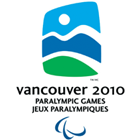State-of-the-Art Anti-Doping Laboratory Completed in Vancouver
Laboratory will process an estimated 2,425 urine and blood samples during Vancouver Paralympics 22 Oct 2009 By IPCOne of the world's most state-of-the-art anti-doping laboratorys, which will process an estimated 2,425 urine and blood samples taken from athletes competing at the Vancouver 2010 Olympic and Paralympic Winter Games, was showcased yesterday to mark the final installation of lab equipment at the Richmond Olympic Oval.
The 1,350-square metre doping control laboratory is key to meeting the goal of doping free Games in 2010 set by the Vancouver Organizing Committee for the 2010 Olympic and Paralympic Winter Games (VANOC) under the direction and authority of the International Olympic Committee (IOC) and the International Paralympic Committee (IPC). The total budget for the anti-doping program is approximately $16.4 million - $8.9 million for the laboratory and $7.5 million for operations.
The laboratory will operate during the Games as a satellite arm of the Quebec-based Institut National de la Recherche scientifique-Institut Armand-Frappier (INRS). The INRS is Canada's only lab accredited by the World Anti-Doping Agency (WADA) and is renowned for its 30 years of expertise in the international testing of athlete samples from all sports. The Vancouver 2010 Anti-Doping Team is responsible for educating athletes about anti-doping rules and procedures, while INRS is responsible for testing samples collected from athletes.
Starting in January, the Richmond facility will have 30 INRS technicians working around-the-clock, as well as seven international scientists from other WADA accredited labs using their expert knowledge to analyse and interpret the results. They will conduct their first official tests for the Games on 4 February 2010 when pre-competition athlete urine and blood samples are taken.
"VANOC is unequivocally opposed to doping in sport," said Cathy Priestner Allinger, VANOC's Executive Vice President, Sport and Games Operations. "Athletes deserve to compete on a fair and level playing field and a state-of-the-art doping control programme is critical to achieving this goal. This on-site laboratory is central to that programme and includes the most technologically advanced equipment available and top-notch scientists, thanks to INRS. Another key component of our programme to deter doping is education," she added. "Over the past year, our Anti-Doping Team at VANOC has spoken with athletes when we hosted them at sport events at our venues about their rights and responsibilities when it comes to anti-doping rules and procedures in 2010."
The City of Richmond is supporting VANOC by providing space for the laboratory at the Oval, home of long track speed skating at the Games. After the Games, the space will be used to house a sports medicine centre and sport science services for the community.
The laboratory is an exact replica of the INRS facility in Montreal, right down to the equipment used and the layout of the facility to ease the transition from the technicians' home laboratory. It is also designed to be soundproof and free of seismic vibrations to ensure accurate results, required under WADA-mandated technical and physical attributes to ensure integrity.
"We are proud to partner with VANOC on delivering a world-class anti-doping programme for the 2010 Winter Games," said Dr. Christiane Ayotte, Director of the Doping Control Laboratory of the INRS. "This laboratory at the Richmond Olympic Oval will utilize the finest techniques and methods available to detect the use of prohibited substances in blood and urine samples collected from athletes."
Locating the laboratory within a secure sporting venue is quite possibly a first in Olympic and Paralympic history. Drivers delivering blood and urine samples from venues throughout the Games region will deposit samples through a secure slot, similar to what is used at a bank, sending them directly into a refrigeration unit for processing.
Doping control stations will be located at all sport venues where samples will be collected from athletes by 130 doping control officers, 50 blood collection officers and 300 chaperones - all are volunteers trained by VANOC at 18 sport events held this past year. Two-thousand samples will be taken from Olympians, with another 425 samples taken from Paralympians. The samples will be driven to the lab in Richmond within hours to ensure a secure chain of custody.
On behalf of the IOC and IPC, VANOC will conduct random, weighted and targeted tests on athletes at the Games. The testing program incorporates intelligence from a number of sources to ensure the most effective program possible. Official results will be known within 72 hours.
The laboratory's operations at the Richmond Olympic Oval conform to the international technical standard ISO/IEC 17025 and are audited by WADA and the Bureau de normalisation du Québec (BNQ) to ensure compliance with the highest international standards for the testing of samples collected during the Games.
The laboratory will close in late March after the Vancouver 2010 Paralympic Winter Games conclude. The bulk of the equipment will be purchased by INRS and used at their facilities in Montreal as a lasting legacy of the 2010 Winter Games.
For more information about the Vancouver 2010 Paralympic Winter Games, please visit the official website www.vancouver2010.com.






